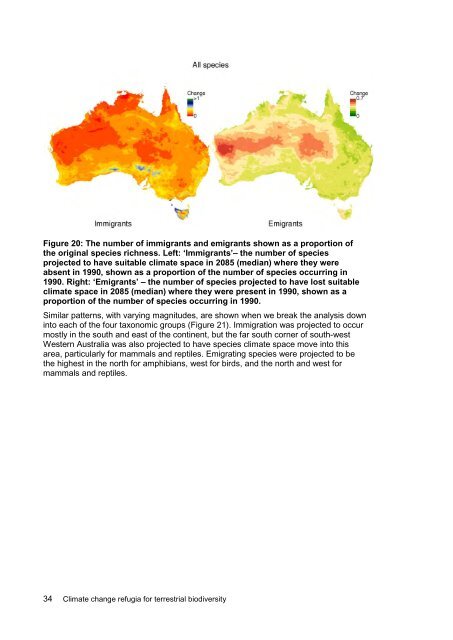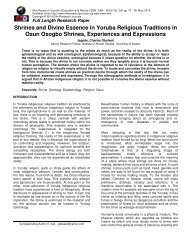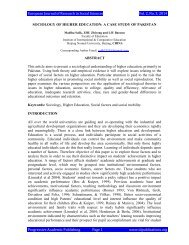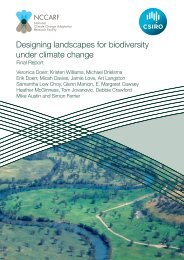- Page 1: Climate change refugia for terrestr
- Page 4 and 5: Published by the National Climate C
- Page 6 and 7: 3.4.4 Future: current-2085 ........
- Page 8 and 9: APPENDIX 3. Species distribution mo
- Page 10 and 11: Figure 29: A detailed view of the p
- Page 12 and 13: x Climate change refugia for terres
- Page 14 and 15: EXECUTIVE SUMMARY Climate change is
- Page 16 and 17: we will be in a better position to
- Page 18 and 19: 1.2.2 Case study 2: Pleistocene sta
- Page 20 and 21: efugia meeting this latter criterio
- Page 22 and 23: 2.7 Conclusions Natural systems are
- Page 24 and 25: highest RCP reported in the SRES (A
- Page 26 and 27: 3.3.4 Species data The study genera
- Page 28 and 29: AUC score is negatively correlated
- Page 30 and 31: Finally, we assess climate change t
- Page 32 and 33: Territory, the Great Australian Big
- Page 34 and 35: Figure 5: The 10 th percentile of l
- Page 36 and 37: Figure 8: The absolute predicted ch
- Page 38 and 39: 3.4.5 Distance measures At a given
- Page 40 and 41: the continent, the required movemen
- Page 42 and 43: Figure 16: An example of a species
- Page 44 and 45: Figure 18: Species richness for eac
- Page 48 and 49: Figure 22 (cont.): The ‘Immigrant
- Page 50 and 51: Figure 24 (cont.): The immigrants a
- Page 52 and 53: Figure 26 (cont.): The areas with t
- Page 54 and 55: 3.4.7.6 Areas of stability Understa
- Page 56 and 57: including the Nullarbor Regional Re
- Page 58 and 59: Table 2: The different classes of r
- Page 60 and 61: most of the continent by 2085 that
- Page 62 and 63: 3.7 Gaps and future research The ne
- Page 64 and 65: individual species) will respond to
- Page 66 and 67: 4.3.2 Topographically adjusted clim
- Page 68 and 69: Tmax adj 0.5° GCM change grids (19
- Page 70 and 71: Table 1: Biological groups compiled
- Page 72 and 73: Invoking space-for-time substitutio
- Page 74 and 75: expected to be considerably less ex
- Page 76 and 77: is, the refugial analysis itself, f
- Page 78 and 79: Figure 40: Refugial potential based
- Page 80 and 81: Figure 43: Enlarged portion (Kimber
- Page 82 and 83: Figure 46: Enlarged portion (Sydney
- Page 84 and 85: Figure 48: Inclusion of areas of hi
- Page 86 and 87: Figure 51: Refugial potential in th
- Page 88 and 89: 4.6 Gaps and future research The GD
- Page 90 and 91: 5.3 Research activities and methods
- Page 92 and 93: time periods to a distance calculat
- Page 94 and 95: proportion of this suitability foun
- Page 96 and 97:
(a) Figure 54: Stability of the cli
- Page 98 and 99:
Figure 55: Climate and habitat suit
- Page 100 and 101:
Mountains in Queensland, the Eungel
- Page 102 and 103:
Figure 58: Areas of endemism in the
- Page 104 and 105:
Northern Tablellands Figure 60: Gla
- Page 106 and 107:
5.6 Discussion 5.6.1 Endemism in re
- Page 108 and 109:
(back to 120 kya compared to LGM in
- Page 110 and 111:
Within each sub-region, potential e
- Page 112 and 113:
Table 9: Greenspot statistics for o
- Page 114 and 115:
drought micro-refuges, then targete
- Page 116 and 117:
The iterative recalculation of all
- Page 118 and 119:
Figure 64: Zonation conservation pr
- Page 120 and 121:
7.6 Gaps and future research The co
- Page 122 and 123:
Figure 66: The refugia areas result
- Page 124 and 125:
8.1.3 Overall lessons from the diff
- Page 126 and 127:
9. GAPS AND FUTURE RESEARCH DIRECTI
- Page 128 and 129:
REFERENCES Ackerly, D. D., S. R. Lo
- Page 130 and 131:
Couper, P. J., B. Hamley, and C. J.
- Page 132 and 133:
Winton, A. T. Wittenberg, F. Zeng,
- Page 134 and 135:
A. Utteridge, J. E. Watkins, R. Wil
- Page 136 and 137:
R Development Core Team. 2011. R: A
- Page 138 and 139:
Tingley, M. W., W. B. Monahan, S. R
- Page 140 and 141:
APPENDIX 1. CLIMATE SCENARIOS AND B
- Page 142 and 143:
Table A1-4: Eighteen Global Climate
- Page 144 and 145:
Table A1-5: Thirty-year climate cov
- Page 146 and 147:
Figure A2-68. Change in temperature
- Page 148 and 149:
Figure A2-70. Proportionate change
- Page 150 and 151:
Figure A2-72. The distance an organ
- Page 152 and 153:
Figure A2-74. The areas for which t
- Page 154 and 155:
APPENDIX 3. SPECIES DISTRIBUTION MO
- Page 156 and 157:
APPENDIX 4. PROJECTED SPECIES RICHN
- Page 158 and 159:
Figure A4-2. The species richness s
- Page 160 and 161:
Table of contents ABSTRACT ........
- Page 162 and 163:
INTRODUCTION Terrain modifies local
- Page 164 and 165:
RESEARCH ACTIVITIES AND METHODS Dat
- Page 166 and 167:
Land Cover The Geosciences Australi
- Page 168 and 169:
Figure A5-4: Terrain adjusted model
- Page 170 and 171:
RESULTS AND OUTPUTS Figures 8 and 9
- Page 172 and 173:
Figure A5-10 Channel Country (SW Qu
- Page 174 and 175:
REFERENCES ANU Fenner School of Env
- Page 176 and 177:
APPENDIX 6. ENVIRONMENTAL VARIABLES
- Page 178 and 179:
Group Short name Name Units Source
- Page 180 and 181:
Group Short name Name Units Source
- Page 182 and 183:
Data Citations Bureau of Rural Scie
- Page 184 and 185:
APPENDIX 7. COMPOSITIONAL TURNOVER
- Page 186 and 187:
Table A7-9. Vascular plant data app
- Page 188 and 189:
to support in house applications an
- Page 190 and 191:
Table A7-10. Summary of GDM model f
- Page 192 and 193:
Variable Group Predictor variable a
- Page 194 and 195:
a) c) Figure A7-78. Continental Aus
- Page 196 and 197:
a) c) Figure A7-80. Continental Aus
- Page 198 and 199:
a) c) Figure A7-82. Continental Aus
- Page 200 and 201:
a) c) Figure A7-84. Continental Aus
- Page 202 and 203:
a) c) Figure A7-86. Continental Aus
- Page 204 and 205:
a) c) Figure A7-88. Continental Aus
- Page 206 and 207:
a) c) Figure A7-90. Continental Aus
- Page 208 and 209:
Table A7-15. Overall relative impor
- Page 210 and 211:
a) c) Figure A7-92. Eastern Austral
- Page 212 and 213:
Table A7-18. Overall relative impor
- Page 214 and 215:
a) c) Figure A7-94. Tingle Mosaic s
- Page 216 and 217:
References Allen R, Pereira L, Raes
- Page 218 and 219:
APPENDIX 8. PLEISTOCENE STABILITY A
- Page 220 and 221:
Figure A8-3. Rainforest in the Aust
- Page 222 and 223:
Canis lupus dingo CANLUPU MAMM Cani
- Page 224 and 225:
Lampropholis mirabilis LAMMIRA REPT
- Page 226 and 227:
Stegonotus cucullatus STECUCU REPT
- Page 228:
Figure A10-1. Spatial patterns of v






